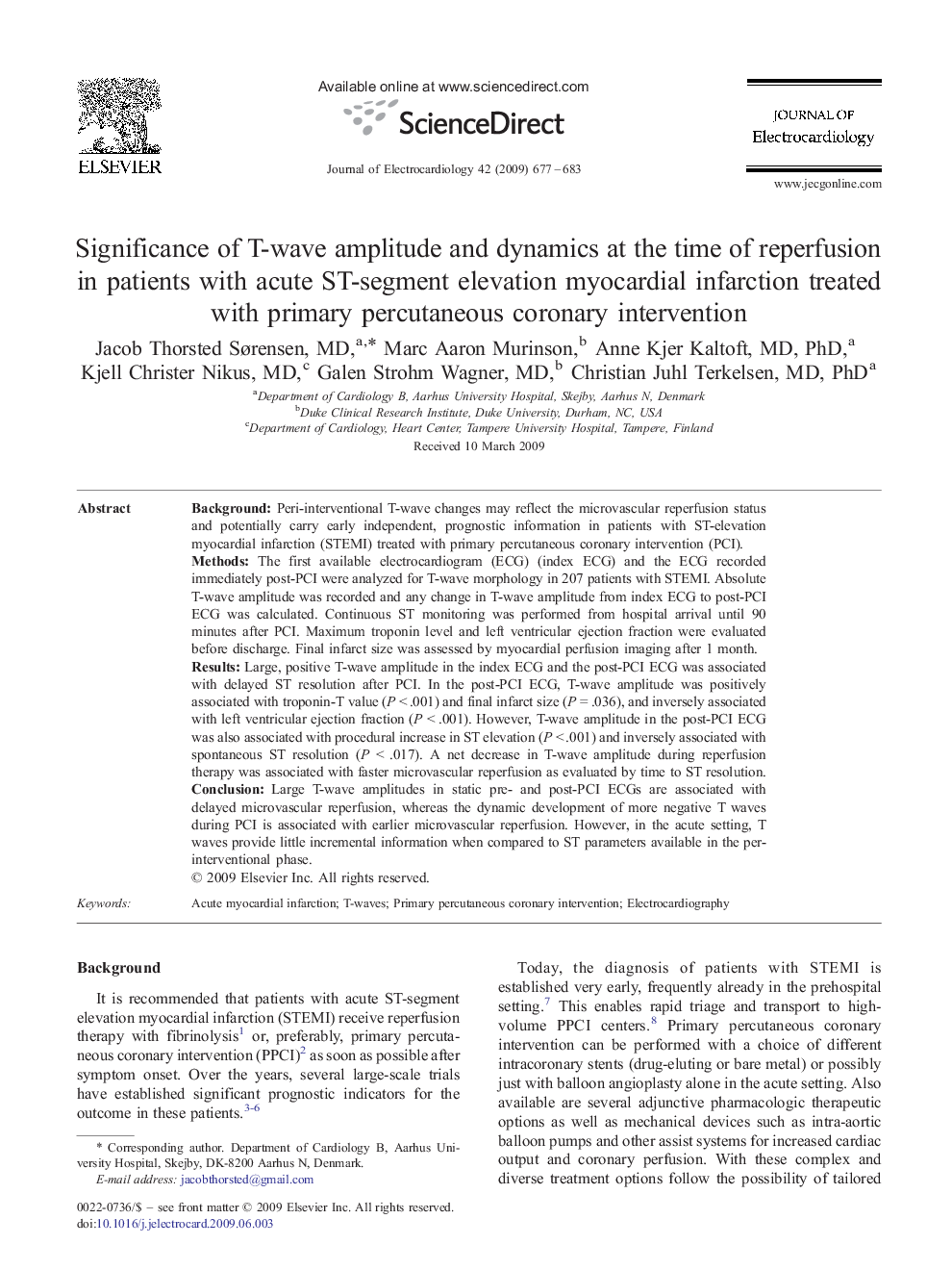| کد مقاله | کد نشریه | سال انتشار | مقاله انگلیسی | نسخه تمام متن |
|---|---|---|---|---|
| 2967717 | 1178854 | 2009 | 7 صفحه PDF | دانلود رایگان |

BackgroundPeri-interventional T-wave changes may reflect the microvascular reperfusion status and potentially carry early independent, prognostic information in patients with ST-elevation myocardial infarction (STEMI) treated with primary percutaneous coronary intervention (PCI).MethodsThe first available electrocardiogram (ECG) (index ECG) and the ECG recorded immediately post-PCI were analyzed for T-wave morphology in 207 patients with STEMI. Absolute T-wave amplitude was recorded and any change in T-wave amplitude from index ECG to post-PCI ECG was calculated. Continuous ST monitoring was performed from hospital arrival until 90 minutes after PCI. Maximum troponin level and left ventricular ejection fraction were evaluated before discharge. Final infarct size was assessed by myocardial perfusion imaging after 1 month.ResultsLarge, positive T-wave amplitude in the index ECG and the post-PCI ECG was associated with delayed ST resolution after PCI. In the post-PCI ECG, T-wave amplitude was positively associated with troponin-T value (P < .001) and final infarct size (P = .036), and inversely associated with left ventricular ejection fraction (P < .001). However, T-wave amplitude in the post-PCI ECG was also associated with procedural increase in ST elevation (P < .001) and inversely associated with spontaneous ST resolution (P < .017). A net decrease in T-wave amplitude during reperfusion therapy was associated with faster microvascular reperfusion as evaluated by time to ST resolution.ConclusionLarge T-wave amplitudes in static pre- and post-PCI ECGs are associated with delayed microvascular reperfusion, whereas the dynamic development of more negative T waves during PCI is associated with earlier microvascular reperfusion. However, in the acute setting, T waves provide little incremental information when compared to ST parameters available in the per-interventional phase.
Journal: Journal of Electrocardiology - Volume 42, Issue 6, November–December 2009, Pages 677–683